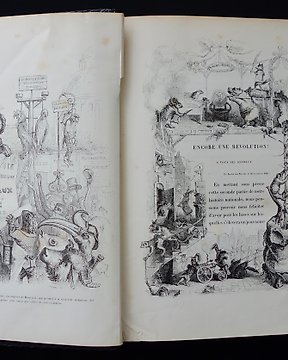
Granville / J.P.Stahl - Scènes de la vie privée et publique des Animaux. Tome 2 - 1842
Nr. 39888123

Nr. 39888123

Period half sheepskin binding, from No. 477 (7 January 1900) to 528 (30 December 1900), being around 156 colour illustrations, notably including the various pavilions at the World Fair.
Marinoni took control of the newspaper in 1882, succeeding Girardin. The weekly Supplément illustré was published from 15 June 1884 onwards - first subtitled the Supplément du dimanche and then the Supplément littéraire - for which an innovation was introduced: colour illustrations. This supplement is ultimately named Le Petit Journal supplément illustré. Sensing the importance of colour, in 1889 Marinoni built a polychrome rotary printing press with a capacity of 20,000 copies per hour, which made it possible, starting with the issue of 29 November 1890 and the portraits of the presidential couple Sadi-Carnot, to print the first and last pages of the illustrated supplement in six colours. The circulation of the Supplement reached one million copies in 1895.
Despite a few crises, the newspaper's audience continued to grow, and none of its competitors could question its supremacy; its circulation reached 500,000 copies in 1878, 1 million in 1890 and certainly around two million in 1895, when it became the newspaper with the highest circulation in the world.
Le Petit Journal was one of the three main French newspapers. This popular newspaper shipped 80% of its circulation to the provinces.
See photos for the condition (possibly with one or a few tears without loss).
Complete.
So kaufen Sie auf Catawiki
1. Etwas Besonderes entdecken
2. Höchstgebot abgeben
3. Sichere Zahlung durchführen